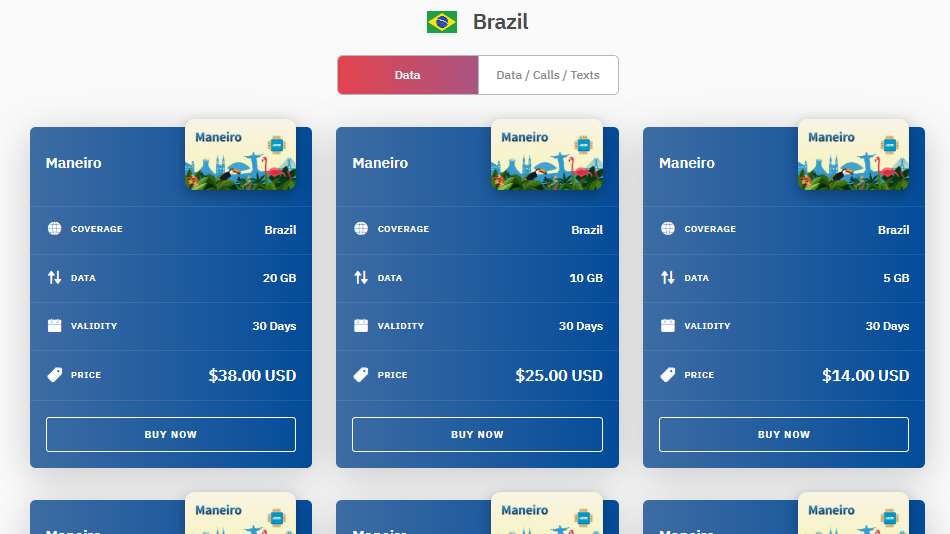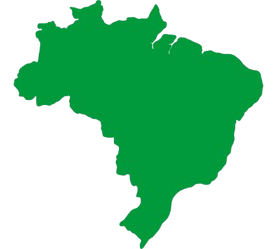*heads up: this post contains affiliate links. if you book through them, i may earn a small commission, at no extra cost to you. it helps support this blog and i truly appreciate it!
Staying connected while traveling in Brazil is essential. Whether you want to call an Uber, check Google Maps, or keep in touch with family and friends, having mobile data makes everything easier.
But figuring out how to get a SIM card in Brazil can be confusing, especially if you don’t speak Portuguese or don’t have a Brazilian CPF (our ID number).
The good news is that there are simple and tourist-friendly options available. You can either install a virtual eSIM before you arrive or buy a physical SIM card once you’re in the country.
In this post, I’ll guide you through the best ways to get a SIM card in Brazil as a tourist. From using Airalo’s eSIM to buying a Claro or Vivo chip at the airport or downtown, I’ll cover everything you need to know.
What’s important here is to make sure your phone is ready to go from day one in Brazil!
Table of Contents
Why You Need a SIM Card in Brazil

If you’re planning to explore Brazil, having mobile data is not just a convenience. It’s something that can completely change your travel experience.
Most Brazilians use apps like WhatsApp for everything, from chatting with friends to making restaurant reservations and contacting Airbnb hosts. Uber and 99 (our local ride apps) work much better than trying to find a taxi on the street.
And with so many natural spots, remote beaches, and big cities to navigate, having access to Google Maps, translation tools, and quick searches can really make your trip easier and safer.
You’ll also notice that public Wi-Fi isn’t always reliable. Some cafes and hostels offer it, but the connection might be slow or require a login with a Brazilian number, which you won’t have unless you get a local SIM.
Whether you’re staying for a few days or a few weeks, having your own data plan helps you feel more free and connected.
Option 1: eSIM (Best for Most Tourists)
If you want to land in Brazil and have internet working right away, an eSIM is probably your best option. It’s fast, fully digital, and doesn’t require a local ID or visiting a store.
Airalo is one of the most popular eSIM providers for international travelers, and it works on most unlocked phones that support eSIM technology.
How it works:
You buy the eSIM online, install it on your phone using a QR code or the Airalo app, and activate it when you arrive in Brazil. The whole process takes just a few minutes.

Plan options include:
- 1 GB to 20 GB of data
- Valid for 7 to 30 days (depending on the plan)
- Runs on 4G networks
- No phone number or calls included (data only)
- Prices start around 4.50 to 38 USD
Why I recommend it:
- No CPF or documents needed
- No need to speak Portuguese
- You can set it up before your trip
- Perfect if you’re arriving late at night or on a tight schedule
I’ve used Airalo during my travels, and it worked perfectly. The connection was stable, and I had internet as soon as I landed in my destination.
Want to make your arrival in Brazil easier? Get your Airalo eSIM here
Option 2: Buying a Physical SIM in Brazil
If you prefer having a local number or need more data for a longer trip, buying a physical SIM card in Brazil can be a good option.
It usually gives you access to local plans with larger data packages and better prices for extended stays.
Main mobile carriers in Brazil:
These are the three biggest providers, and they all offer prepaid plans that work well for tourists. Coverage can vary depending on where you go, but Vivo and Claro usually perform best in most cities and towns.
Where to buy a SIM card in Brazil:
- Official stores in malls or shopping streets
- Airports (usually more expensive)
- Local shops near hotels or tourist attractions
If you’re in Rio, São Paulo, or any major city, you’ll find carrier stores easily.
What you might need:
Some stores will ask for a CPF number (Brazilian ID). This is not always required, especially in tourist-friendly areas, but it depends on who is assisting you.
You can often get around this by asking for a prepaid SIM for tourists or asking a Brazilian friend or hotel staff to help with activation.
Another option is to try using your passport number. Just be aware that you may need to insist a little for them to accept using your passport number.
Typical prepaid plans:
- Packages with 1.5 to 15 GB of data
- Valid for 7 to 30 days
- Some include free use of WhatsApp and social media apps
- Prices usually range from 5 to 15 USD
This option is great if you’re staying longer, want a local number, or plan to travel outside major cities where eSIM coverage might not be as strong.
Airport SIM Cards: Are They Worth It?
If you’re landing in Brazil without an eSIM and want internet as soon as you arrive, airport SIM card kiosks can seem like the easiest choice. They’re usually located in the arrivals area, especially in big airports like São Paulo (GRU) and Rio de Janeiro (GIG).
These kiosks often sell prepaid SIM cards from major carriers like Claro or Vivo, sometimes with tourist-specific packages. The staff usually speak some English and can help you set it up right there.

Pros:
- Quick and convenient if you need data immediately
- No need to look for a store after a long flight
Cons:
- Prices are often higher than what you’d find downtown
- Fewer plan options
Tip from your Brazilian friend: Most international airports in Brazil offer free Wi-Fi for arriving passengers. It’s usually enough to check messages, call an Uber, or contact your pre-booked taxi or transfer. So if you don’t need data urgently, you can wait to buy your SIM card in the city and save some money.
If you’re flying into Rio, I’ve written a full guide on how to get from Rio airport to Copacabana. It covers all the best transport options, including budget-friendly buses and Ubers from the airport.
Final Tips for Staying Connected in Brazil
Whether you choose an eSIM or a physical SIM card, here are a few extra tips to make sure your phone stays connected throughout your trip.
Use apps that work well in Brazil:
- WhatsApp is the most popular messaging app in the country. We use it for everything, including booking tours, contacting Airbnbs, and even ordering food.
- Uber and 99 are the best ways to move around the city, especially if you don’t speak Portuguese.
- Google Maps and Google Translate will be your best friends for getting around and breaking language barriers.
Protect your phone and data:
Avoid using your phone openly on the street, especially in busy areas. Use it with awareness and try to download offline maps if you’re heading somewhere remote.
Also, it’s a good idea to keep your SIM removal tool or eSIM info saved somewhere safe, just in case you switch phones or need to reinstall it.
Always check compatibility before you buy:
Make sure your phone is unlocked and supports eSIM if you’re going for the digital option. If you’re not sure, check with your carrier before your trip.
No matter which option you choose, having mobile data in Brazil will make your trip smoother, safer, and way more enjoyable. Whether you’re heading to the beach or a big city, staying connected helps you make the most of every moment.
I hope this guide helps you have an even better time exploring Brazil and boa viagem! (have a good trip!)



